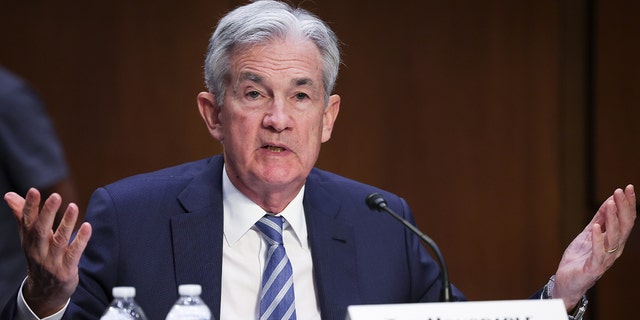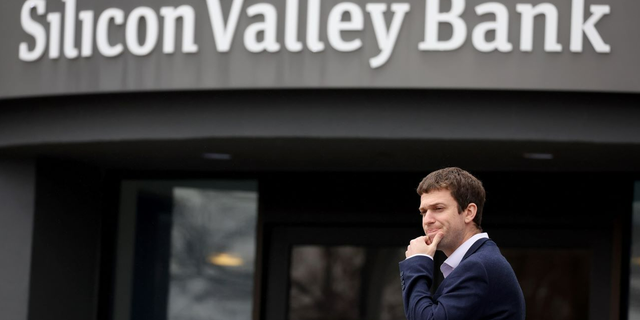What To Do About SVB?
The collapse of Silicon Valley Bank (SVB) and issues with Signature Bank have lawmakers and policy figures grasping for answers. There’s little consensus as to what lawmakers may do in response – if anything.
They just want to be on the right side of this issue – whichever side that winds up being.
For Democrats, they defend moves by the Biden administration.
Meantime, Republicans want to make sure President Biden fields the blame.
Or, at least make some political hay on this. This is why a number of Republicans have been sure to castigate SVB as being “woke” – even if that has little to do with the balance sheet.
No one wants people to get hosed out of their savings. Yet moves by President Biden and the administration to reassure depositors cracked the door open to Republicans to start suggesting this is a “bailout.”
“I’m concerned about the precedent of guaranteeing all deposits and the market expectation moving forward,” said Sen. Michael Crapo, R-Idaho, the top GOPer on the Finance Committee and former Banking Committee Chairman.
Democrats disagreed.
“The banks already pay for this federal deposit insurance to ensure these accounts. The banks will pay a little bit more. Taxpayers are not on the hook, period. We never would have this. There would be no support for this,” said Banking Committee Chairman Sherrod Brown, D-Ohio.
Everyone remembers how toxic the word “bailout” was in 2008 when the economy teetered on the brink. No lawmaker wanted to tank the economy. But lawmakers also weren’t enamored with passing a $700 billion rescue package to help salvage jobs and banks. So, after some frightening fits and starts, Congress finally approved TARP, short for the Troubled Asset Relief Program.
WHEN IT GETS SERIOUS: BIDEN, CONGRESS POISED TO SQUARE OFF OVER SPENDING AND DEBT
That experience is instructive as to how politics and other considerations enter the equation.
There’s concern there could be a “run on banks.” Especially in the social media age.
“This will go down as the history’s first internet-driven run,” said Sen. Mark Warner, D-Va.
And Treasury Secretary Janet Yellen questioned how much the federal government could do if a “bank run” goes viral.
The jury remains out nearly 15 years later as to whether TARP was a good or a bad thing. But it did rescue the economy and probably millions of jobs. Otherwise, things may have tanked worse than 1929.
But one wonders in today’s volatile political climate if Congress could ever muster the votes to pass any other emergency measure were a similar financial collapse to descend on the nation, ala 2008.
Fortunately, Congress doesn’t have to act on anything like that – yet. However, lawmakers are looking at tightening lending rules and studying exactly what went wrong with SVB.
“How come they were asleep at the switch?” asked Senate Minority Whip John Thune, R-S.D., about banking regulators.
Senate Majority Leader Chuck Schumer, D-N.Y., sidestepped questions about if members were spooked because of the 2008 exercise.
“I have faith in President Biden, (Treasury) Secretary (Janet) Yellen and the Federal Reserve,” said Schumer. “They have all hands on deck to manage this and keep our economy sound.”
The Federal Reserve and regulators are now investigating SVB. A report is due in early May.
“The events surrounding Silicon Valley Bank demand a thorough, transparent and swift review by the Federal Reserve,” said Fed Chairman Jerome Powell.
Imagine the questions Powell may have entertained from lawmakers if SVB imploded just before he appeared on Capitol Hill last week.

Sen. Elizabeth Warren, D-Mass., opposed Powell’s renomination as Fed Chair. She’s used the SVB crisis to highlight her problems with Powell.
“I opposed (Powell) for specifically the reason he was too light on regulations,” said Warren. “I thought it was dangerous to have someone like Powell who was willing to deregulate the banks in the position as head of the Fed. And I think some of that danger has now shown itself.”
Warren is proposing legislation to tighten up regulations.
One thing to review is whether there are sufficient backstops and oversight via the Dodd-Frank banking overhaul law from 2010. Democrats criticize the Trump Administration for rolling back some requirements of Dodd-Frank which they believe contributed to problems with SVB. Keep in mind that many Republicans opposed Dodd-Frank as a response to the financial collapse of 2008.
This is why questions of “too big to fail” still echo 15 years after the 2008 calamity. A 2018 law boosted the “too big to fail” asset threshold from $50 billion to $250 billion. Still it’s unclear what scrutiny SVB should have drawn from federal regulators, regardless of assets and liquidity needs.
But some Republicans aren’t digging back into the 2018 legislation.
“Calling for more regulation is a distraction that will not solve for failed, basic supervision,” said Crapo. “This event was a basic supervisory oversight failure of poor financial risk management strategies.”
Warren said that “repealing” the 2018 law should “be an immediate priority for Congress.” Warren says that the 2018 measure “weakened the rules for banks like SVB.”
The bottom line is that SVB invested increasingly in U.S. securities. As interest rates climbed, those holdings became more problematic for SVB.
It’s unclear what other institutions may have invested in U.S. treasuries and what the impact could be as interest rates have climbed. There are also questions about the Fed and if it may continue upping interest rates for the time being.
Powell testified last week before the Senate Banking Committee – forecasting additional rate increases.
DAYLIGHT SAVING TIME: THERE OUGHTA BE A LAW
“The latest economic data have come in stronger than expected which suggests that the ultimate level of interest rates is likely to be higher than previously anticipated,” testified Powell. “If the totality of the data were to indicate that faster tightening is warranted, we would be prepared to increase the pace of rate hikes.”
Fed watchers believed Powell could boost rates to 5.5 to 5.75 percent.
If the Fed continues to raise rates, it could expose the volatility of banks invested in treasuries and mortgage-backed securities. However, the Fed has introduced another lending program – available on an emergency basis – to provide cash to institutions which are at risk due to holdings which hinge on interest rates. Underwriting the banks could give the Fed more agility to continue to raise interest rates as a tool to fight inflation. And so far, increasing interest rates appears to be the only tool the Fed can truly use to tamp down inflation.

The Fed wants to make sure investors will have access to their cash and simultaneously grapple with inflation.
But don’t expect any movement right away from Congress unless this devolves deeper into crisis. Any prospective action is months away – and certainly delayed until after the Federal Reserve completes its review in six weeks.
That’s not to say there won’t be jawboning.
“The government has just had to step in this weekend to prevent bank runs because bank lobbyists have too much power in this town,” said Brown. “It’s the same story it’s happened time and time again. It happens in railroads. It happens in the drug industry. It happens in oil companies and Congress pays more attention to their contributors and their friend in the lobbying community than they do the workers at home.”
One school of thought is that inspectors may have missed it because SVB was so tech oriented. Note that Signature bank which also imploded was leveraged 20 percent in cryptocurrency.
“The only thing that nobody here even understands,” groused Sen. Michael Bennet, D-Colo.
Another theory is that regulators pushed financial institutions into treasuries.
But perhaps the saving grace is that this isn’t a crisis which demands immediate Congressional action, ala 2008.
That’s because lawmakers would struggle to drag anything across the finish line.
Read the full article Here


